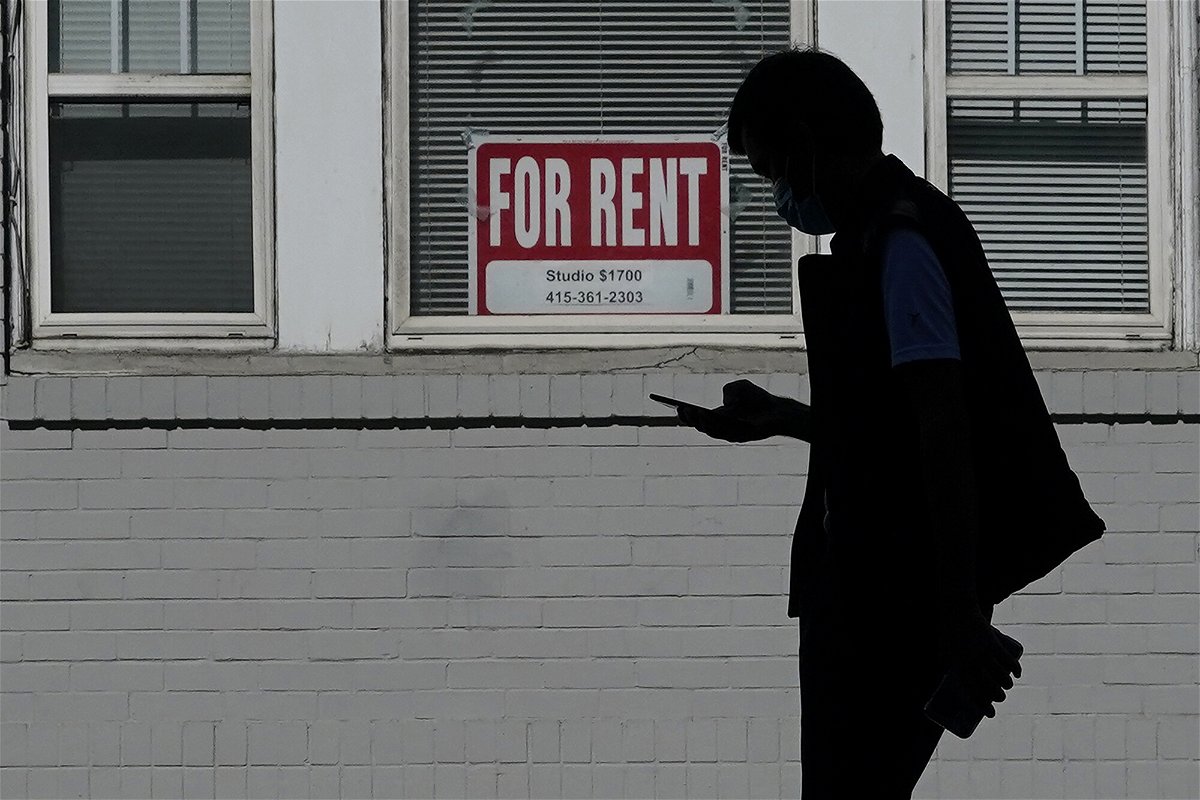Here’s why the US government is changing rent relief distribution

There is still emergency rental assistance available for those struggling to cover their rent because of the pandemic. But some of that aid will soon be shifted to places that have run out of funds.
By Anna Bahney, CNN Business
There is still emergency rental assistance available for those struggling to cover their rent because of the pandemic. But some of that aid will soon be shifted to places that have run out of funds and still have people in need of help.
The US Department of Treasury will begin moving rental assistance among state and local aid distributors in order to make sure it gets into the hands of struggling renters and their landlords.
“Over 2.5 million households have been helped by emergency rental assistance,” said Diane Yentel, president and CEO of the National Low Income Housing Coalition. “With back rent paid, these families have a clean slate and some housing stability to help get through the next wave of the pandemic. But many struggling renters have yet to receive assistance, through no fault of their own, and remain at risk of losing their home this winter.”
During the pandemic, a historic $46.55 billion in rent relief was appropriated by Congress. This came in two pots of rent relief money: $25 billion from the stimulus package passed a year ago, and an additional $21.55 billion included in the American Rescue Plan Act, enacted in March.
By the end of October, just under half of the first allotment, or $12.1 billion, had gone out, according to a Treasury Department report, and $1 billion — or about 5% — of the second round had been distributed.
As distribution of the second round of funds ramps up, the federal government wants to make sure money goes where it is needed and that it is efficiently being distributed.
Initially, distribution of funds was slow and inefficient. There was no national rent relief infrastructure prior to the pandemic, and the government needed to use a patchwork process of distribution that put tremendous administrative burdens on states, cities and localities.
But now the Treasury projects that as much as $30 billion of the total rent relief funds will be spent or obligated by the end of the year. It estimates that at least 80% of the program’s first round of funding will be spent or spoken for by December 31.
Generally states fall into three categories, said Yentel. There are high-need states that are effectively distributing relief, like New York, Oregon, New Jersey, Texas and California. There are high-need states that are not efficiently distributing aid, like Ohio and Florida. And there are states with smaller populations that may have received more funding than they needed, like North Dakota, South Dakota, and Wyoming.
By the end of October, more than 100 state and local entities distributing funds were effectively out of rent relief money from the first round, having distributed 95% or more to struggling renters and landlords, according to the Treasury report. Nearly 130 distributors had already moved on to their second round of funds.
Some high-need places are finding that all of the money from both pots is already accounted for.
Texas, for example, announced that the total applications in its system — which includes the $1.2 billion it has already disbursed — exceeds the state’s allocations from both rounds of funding combined. Oregon also reported that all of its funds are spoken for between aid that has already gone out the door and applications in process. New York already has $2 billion of its total $2.4 billion in emergency rent assistance accounted for.
On the other hand, there are 26 states whose distribution of aid falls far below Treasury’s benchmark and are most at risk of having funds reallocated elsewhere. Some of these include states with fewer people, like South Dakota, North Dakota, Wyoming and Nebraska, none of which had distributed more than 10% of of their first round funds by the end of October.
Other states on this list have larger populations and ongoing high levels of need, but they are not effectively distributing aid. These states include Ohio, which had only distributed 14% of its round one funds through October, and South Carolina, which only distributed 10%.
Will some renters be out of luck?
A substantial portion of the aid reallocation will be voluntary, with local distributors and the federal government collaborating on where the money should go, according to the Treasury. Because of improvements in the distribution of aid, Treasury expects only a limited amount of money will be available for reallocation.
But Yentel’s group and other housing advocates are working to ensure that people do not lose access to rent relief because of where they live.
“Renters must be held harmless for poor performing emergency rental assistance program administrators,” said Yentel.
The Treasury is recommending that states and localities that have their funds reallocated turn to other sources, including the $350 billion Coronavirus State and Local Fiscal Recovery Funds, in order to continue providing rent relief.
Yentel and other housing advocates said they remain concerned about places that have yet to improve the efficiency of getting rent relief to those who need it.
“While the overall rate of spending emergency rental assistance has improved, many programs are still too slow in getting assistance to tenants in need,” Yentel said. “Those program administrators that can’t or won’t follow clear White House and Treasury directives will have funding swept and reallocated to those that will.”
If you need assistance to cover rent or to help pay back rent, there is a searchable list of available programs at the US Treasury and also one managed by the NLIHC.
The-CNN-Wire
™ & © 2021 Cable News Network, Inc., a WarnerMedia Company. All rights reserved.